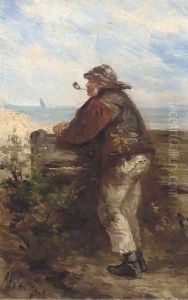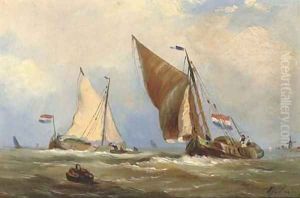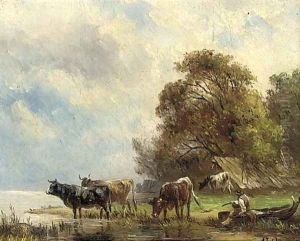Albert Jurardus Van Prooyen Paintings
Albert Jurardus van Prooyen was a 19th-century Dutch artist known for his landscape paintings. Born on December 8, 1834, in The Hague, Netherlands, van Prooyen was part of the Hague School of art, which gained prominence in the latter half of the 19th century. The Hague School artists were known for their realistic portrayals of Dutch landscapes, often with an emphasis on the country's moody skies, calm waters, and everyday rural life.
Van Prooyen's artistic journey began with his studies at the Academy of Fine Arts in The Hague, where he was influenced by the works of the old Dutch masters as well as by his contemporaries who were exploring new forms of realism in art. His education equipped him with a solid foundation in traditional painting techniques, which he applied to his own observations of the Dutch countryside.
Throughout his career, van Prooyen exhibited a strong affinity for depicting the serene and pastoral landscapes of his homeland. His works typically feature tranquil scenes with cattle, rustic cottages, windmills, and waterways, capturing the essence of the Dutch landscape with a delicate attention to light and atmosphere. He was particularly adept at rendering the effects of sunlight and shadow, which added a sense of depth and realism to his paintings.
Van Prooyen's landscapes were appreciated for their serene beauty and were collected by art enthusiasts in the Netherlands and beyond. He was not only a painter but also a watercolorist and etcher, demonstrating versatility across different mediums. Despite his dedication to his craft, van Prooyen did not gain the same level of fame as some of his contemporaries from the Hague School, such as Jozef Israëls or the Maris brothers, but his work was nevertheless respected and sought after by collectors.
Albert Jurardus van Prooyen passed away on May 29, 1898, in his hometown of The Hague. Today, his paintings can be found in private collections and occasionally appear in auctions. They serve as a testament to the enduring appeal of the Dutch landscape tradition and the quieter, yet significant, voices of the Hague School.


